Although the oily dishes have kept a lot of fat friends who are clamoring for weight loss at a distance, it is undeniable that the oily dishes are really exciting. Now, to meet everyone’s delicious and healthy dietary requirements, there are more and more options for edible oils on the market, including peanut oil, sunflower oil, corn oil, olive oil, tea seed oil, coconut oil, and more.

Oil | pixabay
There are so many types of oil, many friends also dislike “too oily and too greasy”, but they don’t know how long the ancients have gone through in order to eat oil!
sizzling flesh, oozing fat and cream
In the beginning, oils were derived from animal fats .
In the hunting era, people found that when heating meat, there would be liquid seeping out of it, which is probably the most primitive understanding of the ancestors of oil. Since written records, oil was originally called “fat” or “ointment”.
“Release of Names” says: “With horns, it is called fat, and without horns, it is called ointment.”
That is to say, what is extracted from animals with horns is called fat, and what is extracted from animals without horns is called paste. For example, tallow and suet is called fat, and lard is called paste.

Lard and Butter | goodhousekeeping
Regarding “paste” and “fat”, there is another explanation: what solidifies into a solid is called fat, and what melts into a liquid is called ointment.
“Book of Rites, Nei Ze” records the cooking at that time, “scallions are used for fat, and chives are used for paste.” Chen Yan, a scholar in the Song and Yuan Dynasties, commented: “The fat condensed is fat, and the release is paste.”
We now call the solidified fat and the melted oil oil. The word “ointment” is basically useless, but now we still have a commonly used idiom that still retains these two words: Minzhi and Minjiao.
Regarding the application of animal fats in cooking, many literatures have recorded, such as:
“Zhou Li·Tianguan Tomb Slaying” records: “All birds are offered: lamb and dolphin in spring, fragrant food paste; scorpion in summer, food paste; calf in autumn, food paste fishy; fresh feathers in winter, food paste smell of mutton.”
Here, the birds and animals and cooking oil that are dedicated to the emperor in the four seasons are stipulated. There are different interpretations of the words ointment fragrance, ointment shame, ointment fishy, ointment mutton, but they are nothing more than animal fats such as tallow, suet, and lard.
The diet in the pre-Qin period was generally good , and most of the vegetables at that time had a bad taste. There are only a few kinds of radishes, leeks, onions, and garlic that have been passed down to the present. The rest have basically withdrawn from the ranks of vegetables and become weeds. Most of the vegetable varieties we eat now have been gradually introduced from foreign countries over a long history. Therefore , at that time, you were the emperor, that is, eating animal fried meat every day.
Animal fats at that time were used for lighting in addition to cooking.
“Records of the Grand Historian: The Chronicle of the First Emperor of Qin” records: “(The underground palace of Qinling) uses mermaid cream as a candle, and those who are immortal will last for a long time.”
In 1968, the Changxin palace lantern was unearthed from the tomb of Dou Wan, the wife of Liu Sheng, King Jing of the Western Han Dynasty, in Mancheng County, Hebei Province. According to the unearthed material, there were a small amount of waxy residue on the upper part of the lampshade, and it was speculated that the burning substance in the palace lantern was also animal fat.
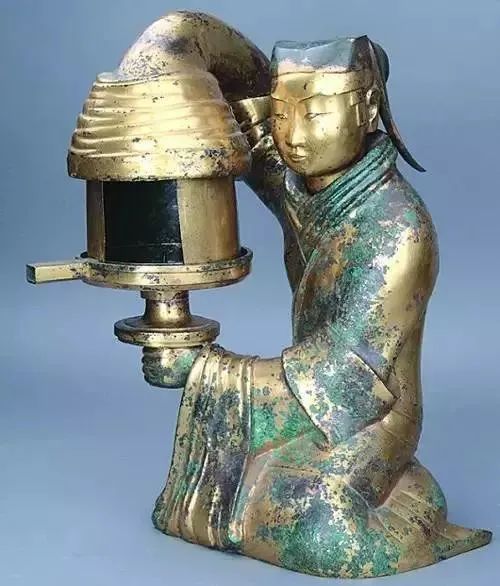
Changxin Palace Lantern | hb.wenming.cn
Sesame: Since the Han Dynasty, I’ve been an oil boss
Although soybeans called shu in ancient times were planted in the Spring and Autumn Period in my country, it was a long time ago that it was used as an oil-pressing crop. The earliest raw material for oil extraction was actually sesame.
Xihan: Fighting with sesame oil is hot and fragrant!
During the period of Emperor Wu of the Western Han Dynasty, Zhang Qian went on an envoy to the Western Regions, and while expanding the territory, he also brought a lot of crop seeds from the Western Regions to the Central Plains: grapes, alfalfa, pomegranates, sesame and so on. Because sesame was brought back by Zhang Qian from the Hu belt in the Western Regions, sesame was first called “Flax” . It has been used for oil extraction in the Han Dynasty, and the oil produced is called “sesame oil” or “sesame oil”.
“Three Kingdoms: Wei Shu” records that when Wei general Man Chong resisted Sun Quan’s attack on Hefei, he “turned pine into a torch, poured sesame oil, set fire from the upper wind, and burned thieves’ attack and equipment.”
Thinking back to this battle, while the flames were raging, the scent of lit sesame oil overflowed. I don’t know if the soldiers on both sides of the war are drooling while fighting.
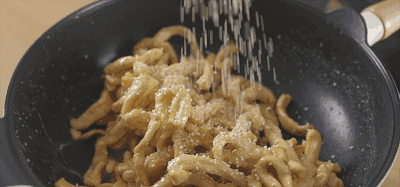
Just ask if you smell good? | yum of China
Xijin: You can’t cook without sesame oil
Zhang Hua of the Western Jin Dynasty recorded several applications of sesame oil in food in “Natural History”:
Fried sesame oil. The water vapor is completely smokeless, and it is still cold if it does not boil again. It can be mixed by hand. When you get water, the flame will rise, and the scattered soldiers will not be extinguished.
There is a tempeh method in foreign countries: soak the beans in bitter wine, make them extremely dry, steam them with sesame oil, and stop the violence after three passes.
This shows that before the Western Jin Dynasty, sesame oil has been widely used in food cooking.
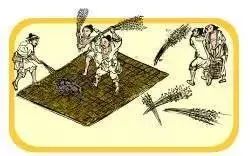
The ancient method of making sesame oil to hit hemp | ibeigang.com.tw
And the “Qi Min Yaoshu” written by Jia Sixie of the Southern and Northern Dynasties also records:
According to this world, there are white flax and eight-edge flax, and the white ones are more oily.
There are already different varieties of sesame in this period, and people already know which variety has higher oil content during the oil extraction process. “Qi Min Yao Shu” also records that many recipes use sesame oil.
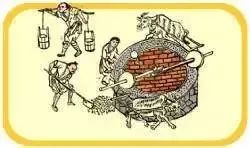
Stone mill made by ancient methods of sesame oil | ibeigang.com.tw
Song Dynasty: If you don’t fry it, you can’t be considered a delicacy!
The Song Dynasty was a peak of scientific and technological development in ancient my country. The movable type printing and the compass among the four great inventions all appeared in this period.
Oil extraction technology also developed rapidly during this period, and the number of oil crops used for oil extraction began to increase.
Zhuangchuo of the Northern Song Dynasty recorded in “Chicken Ribs”: “The oil is all over the four directions, edible and natural, but flax is the best, and the vulgar is called fat hemp. Hedong (today’s Shanxi) eats hemp oil, and Shaanxi eats almonds, red and blue flowers. , Manjing seed oil (rapeseed oil), Shandong also uses cocklebur as oil, and Yingzhou also eats fish oil.”
Song Dynasty people not only eat more kinds of oil, but also have an unprecedented love for fried food.
Shen Kuo recorded in “Mengxi Bi Tan”: “Nowadays, northerners like to fry things with sesame oil, no matter what they are, they all use oil to fry them.”
I really wish the sesame had to be fried in sesame oil before eating it.

The snacks recorded in many notes of the Song Dynasty included “oil cakes”, “fried clips”, “fried spring fish” and so on.
China’s traditional snack fried dough sticks, according to legend, Qin Hui killed the national hero Yue Fei during the Shaoxing period of the Southern Song Dynasty. In order to express their hatred for the traitor, the people made the appearance of Qin Hui and his wife Wang Shi on the noodle cake, and made the two pieces different in appearance. The dough cakes were glued back to back and fried in a rolling oil pan, named “Fried Juniper” and later renamed Youtiao . And whether the legend is true or not, it seems that the love for high-calorie fried food is the same in ancient and modern times.
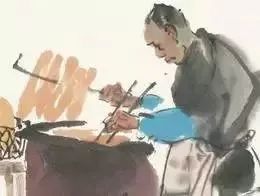
Fried juniper?
This kind of hobby has probably also spread to the surrounding countries. The animal oil produced by the nomadic countries is probably not enough to eat, and it needs to be obtained from the Song Dynasty. The Song Dynasty placed great emphasis on literature and neglected military force, and its military strength was weak. Every year, it had to pay tribute to Liao, Xixia and later Jin to maintain peace . According to the “Song History”, among the tribute products, oil was among them.
In the Southern Song Dynasty, Hong Hao, who was an envoy to the Jin Kingdom, recorded such a thing. In terms of living conditions, the Jin Kingdom treated the envoys from the Song Dynasty. In terms of living conditions, each person was provided with wine, meat, noodles, and rice, but only at the level of deputy envoy or above. only daily supply of oil. Look at the Jin Kingdom at that time, how precious oil was a living material.
Yuan Dynasty: The secret of oil extraction was revealed
The “Donglu Wang’s Agricultural Book” written by Wang Zhen in the Yuan Dynasty first recorded the oil-pressing utensils . In the chapter “Oil Press” in this book, the structure and usage of the oil press car are recorded in detail:
Take oil too. Use four solid and large woods, each with a circumference of five feet and a length of more than ten feet, stacked on the ground to form a squat, a groove on the top, and a base plate embedded in the bottom. , to remark oil in the device.
If you want to make oil, fry the sesame seeds in a large wok first, when they are cooked, they are pounded with a shovel, or crushed to rot, steamed in the upper retort, and the grass is used as clothing, stored in a circle, and accumulated in a trough; , and then insert a long wedge vertically, lift the shovel or vertebrae at a high place, and press it very tightly, and the oil will come out of the groove. This horizontal pressing is called lying trough. If the wood is used for it, it is called a vertical groove, and a wedge is used on the side, or a pressure beam is used on the top, and the oil is obtained very quickly.

“Donglu Wang’s Agricultural Books: Agricultural Instrument Atlas No. 9”
The structure of the apparatus and the processes of crushing, steaming, frying, making cakes and pressing of raw materials are described in detail. This oil extraction method has been handed down to the present, and this ancient oil production method can still be seen in some rural areas.
However, this method of oil extraction is labor-intensive, and the operators are very hard, so the author also sighs at the same time: there are many ways to get it, who has the grease? Looking back at the women in the room, how could it be moisturizing.
Ming Dynasty: Oil crops have a big ranking
The Ming Dynasty was the last peak of the development of science and technology in ancient my country. “Tian Gong Kai Wu” published in the late Ming Dynasty is the first comprehensive work on agriculture and handicraft production in our country.
In the twelfth volume of this book, “Paste Liquid”, the oil yield, properties and rankings of oil products of more than ten kinds of oil crops are introduced in detail. In addition, the oil-pressing process and oil-pressing equipment at that time were also described and drawn in detail.
The author ranks the advantages and disadvantages of various edible oils and fats:
The best ones are flax, radish seeds (radish seeds), soybeans, and cabbage seeds (cabbage seeds);
Followed by suma, brassica seeds (rapeseed);
Again , tea seeds and amaranth seeds;
The worst are marijuana kernels.

seed set
Regarding the oil-making process, in addition to the process recorded in the “Donglu Wang’s Agricultural Book”, the author also specifically mentioned a “boiled method” used to extract oil from castor and sesame seeds, which is what we are talking about now water substitution method. The sesame oil prepared by the water substitution method is called “small milled sesame oil”, and it is still an important condiment in our daily cooking until today.
The bean cake after oil extraction, the author recorded that it was used as pig feed in the Jiangnan area. This shows that the ancients have discovered that bean cake is an excellent animal feed in the long-term practice process, and it also reflects the wealth of the Jiangnan region in the late Ming Dynasty.
The most interesting thing in the book is that the author records the oil yield of more than ten kinds of oil-making raw materials in detail, from which we can get a glimpse of the technical level of the oil-pressing industry in the Ming Dynasty.
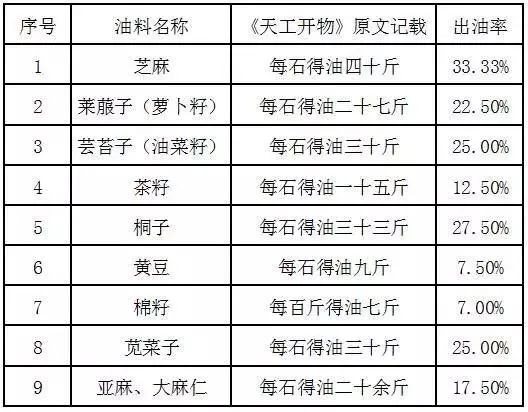
The “stone” in the Ming Dynasty is both a unit of measure and a unit of weight. As a unit of weight, 1 stone is equivalent to 120 pounds (equivalent to 70.8 kilograms in modern times).
Soybeans, why are they “squeezed” so late?
Although soybean has a long history of planting in China, it is very late as a raw material for oil extraction, because the oil content of soybean is low , only 16-19%. In the Ming Dynasty, the oil yield by pressing was only 7.5%.

You’ve all seen what soybeans look like in pods: soybeans = soybeans = edamame | alzernews
The oil content of sesame is relatively high, reaching 45~50%, and the oil yield of nearly 35% can be obtained by pressing, which is also the reason why sesame oil has dominated for a long period of time.
Judging from the oil content of various oils known now, the residual oil of the oil after the pressing process in the Ming Dynasty was about 10~15% , which should also be the highest level that the technology at that time could achieve. Even if a mechanical press was used later, the residual oil in the oil was still around 6-8%.
That part of the oil stubbornly remained in the oil was not completely extracted until the European invention of “leaching oil” in the mid-19th century (the residual oil after the leaching process was less than 1%).
Peanuts: common like me, but also foreign
All kinds of oils and fats that we often eat in our modern life are basically mentioned in the above articles, but there is no trace of peanut oil. The oil content of peanuts is very high, about 45% , and it can be used for oil extraction to obtain a higher oil yield. Why was there no record of peanut oil until the Ming Dynasty? Because peanuts are also an exotic species. Although China has a record of “peanut” species for a long time, the peanut varieties we are familiar with every day are native to the Americas.
Columbus’ discovery of the American New World was not only a major event in history and geography, but also a major event in the history of agriculture. Many of the crops we are now familiar with are native to the Americas: corn, peppers, sweet potatoes, peanuts, and more.
According to Mr. Xie Guozhen’s research, about the late Ming and early Qing dynasties, the American variety of peanuts (large peanuts) began to be widely planted in China.
The oil extracted from peanuts is bright in color and rich in fragrance, and soon won the love of the majority of the people. The book “Yuheng Zhi of the Dianhai Sea” written at the end of the 18th century records:
Peanuts are the number one in the South… If they grow on the seashore, oil extraction is the top priority. Therefore, from Fujian and Guangdong, peanut oil is eaten, and the ointment is used as a lamp for night work. Now it has spread all over the coastal provinces, and it is very beneficial. big.
At present, the largest growing area of peanuts has moved north to Shandong. The Laoshan area of Qingdao has formed a large-scale peanut oil mill group in the late Qing Dynasty. Today, the Jiaodong area is still the largest peanut oil producing area in China.
The story of oil in ancient times ends here, but the story of food never ends…
Author: qiuwenjie
Editor: Iris
This article is from Nutshell and may not be reproduced without authorization.
If necessary, please contact [email protected]

This article is reproduced from: http://www.guokr.com/article/462366/
This site is for inclusion only, and the copyright belongs to the original author.